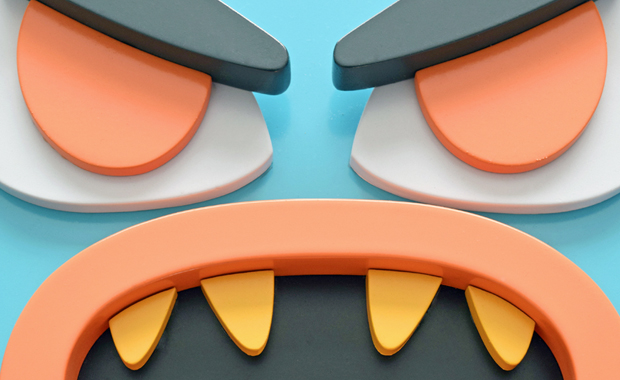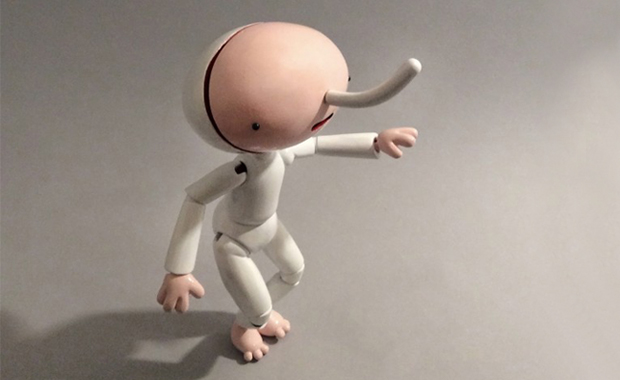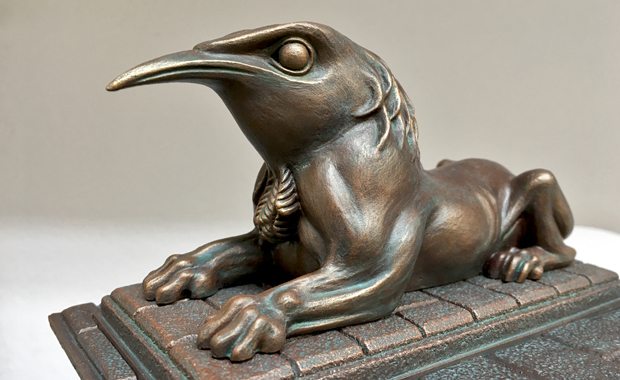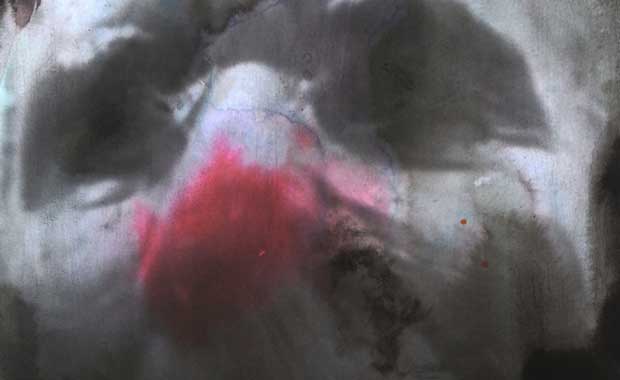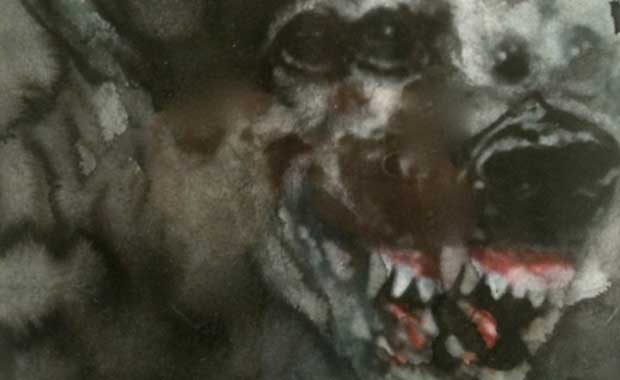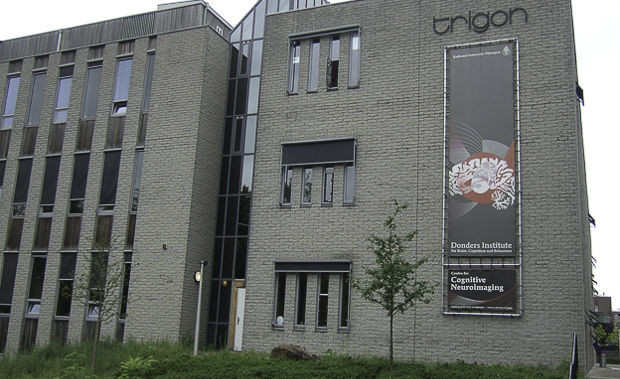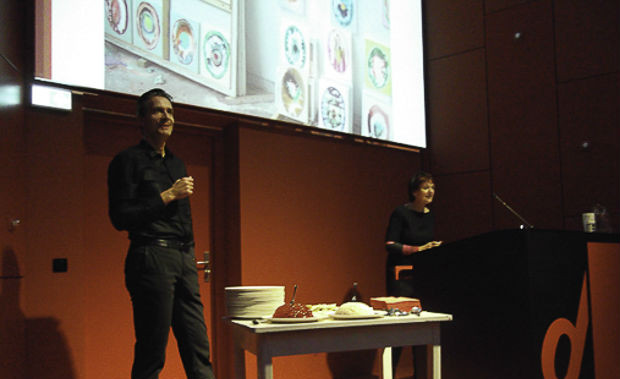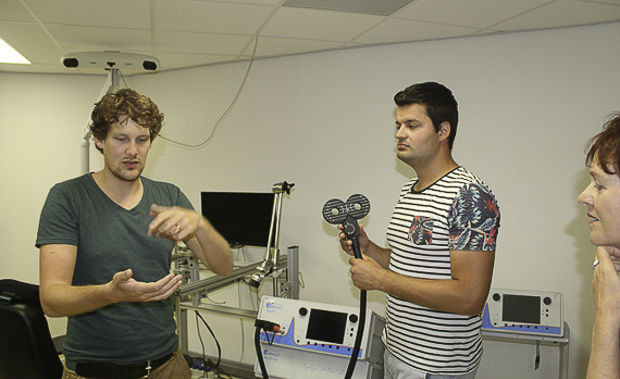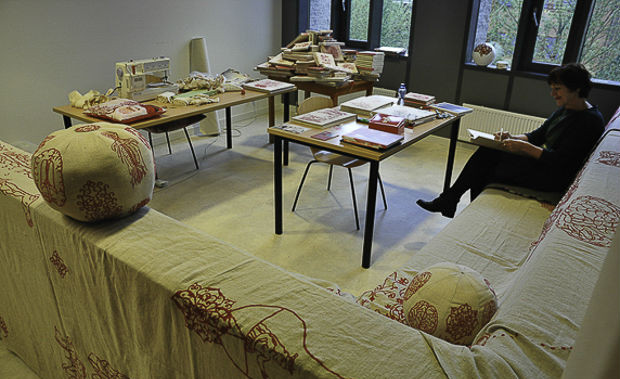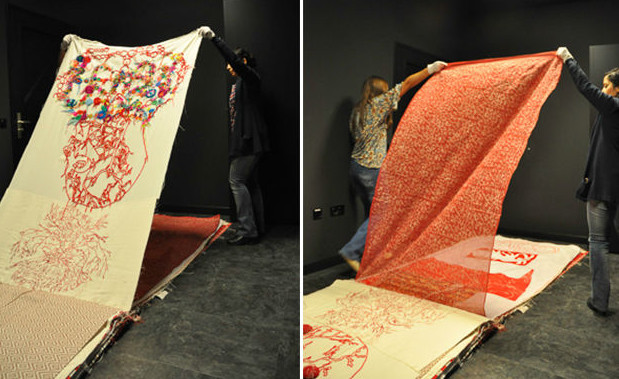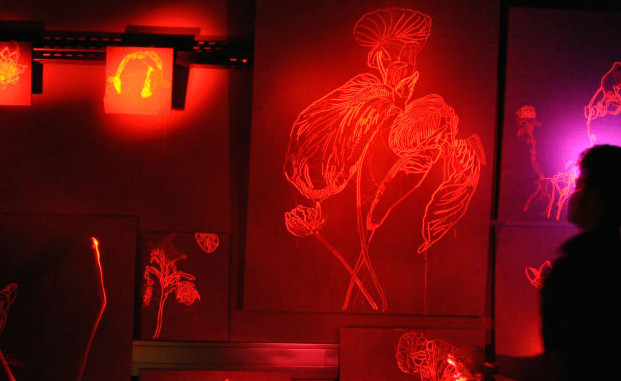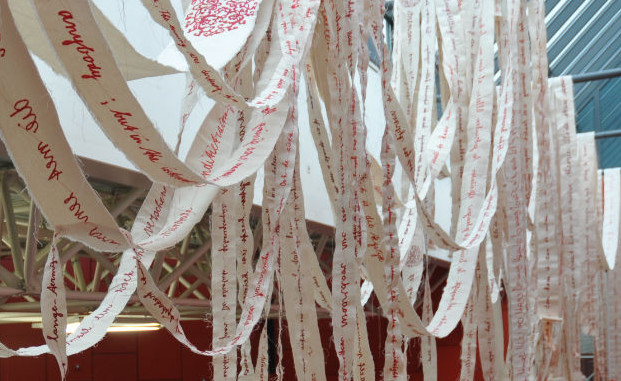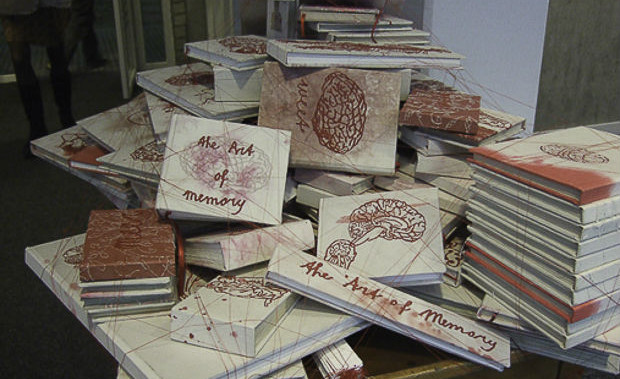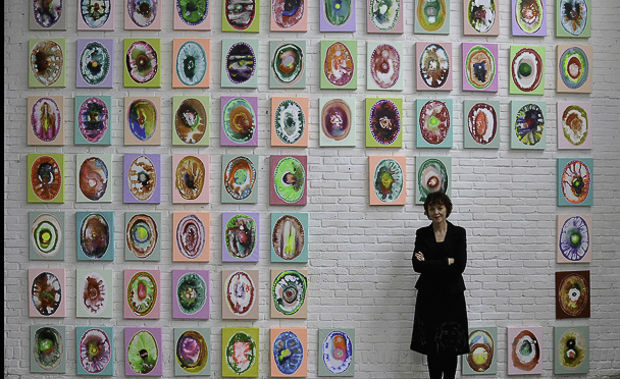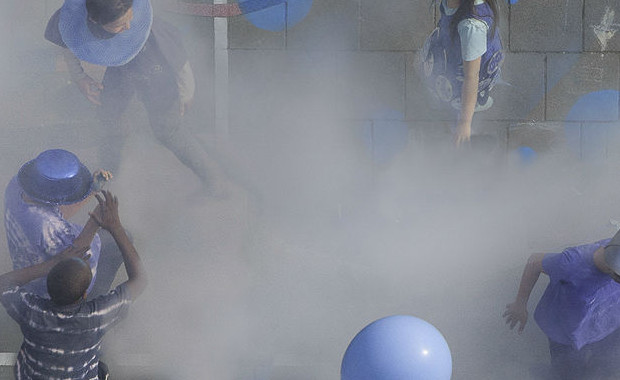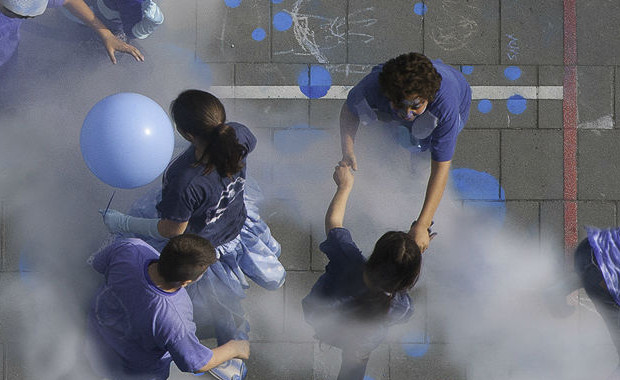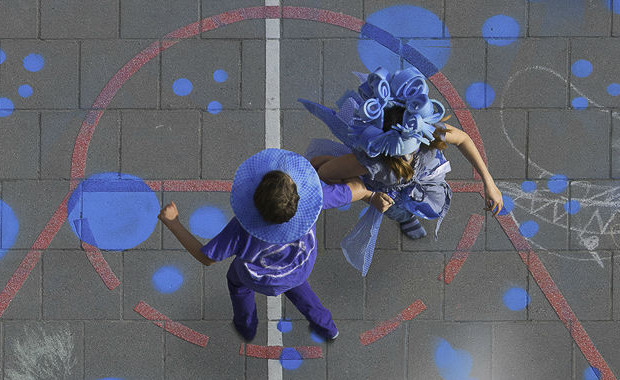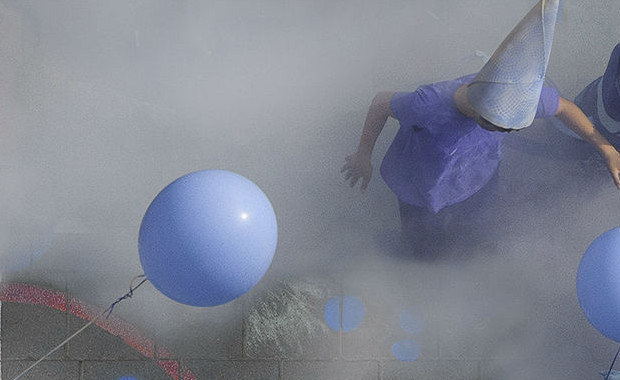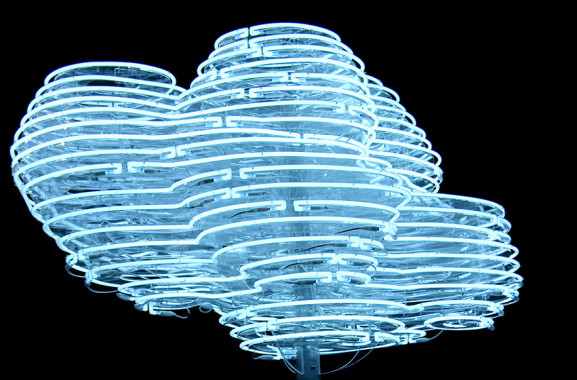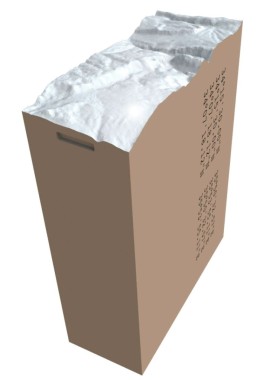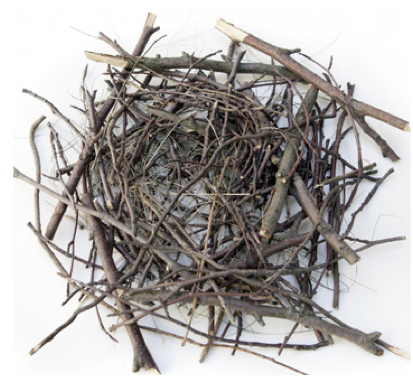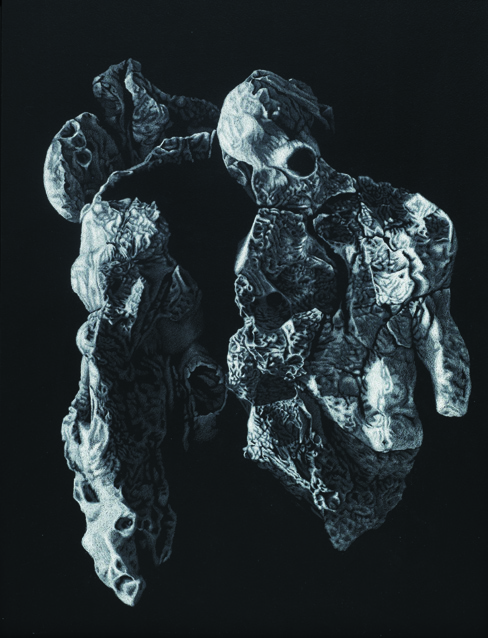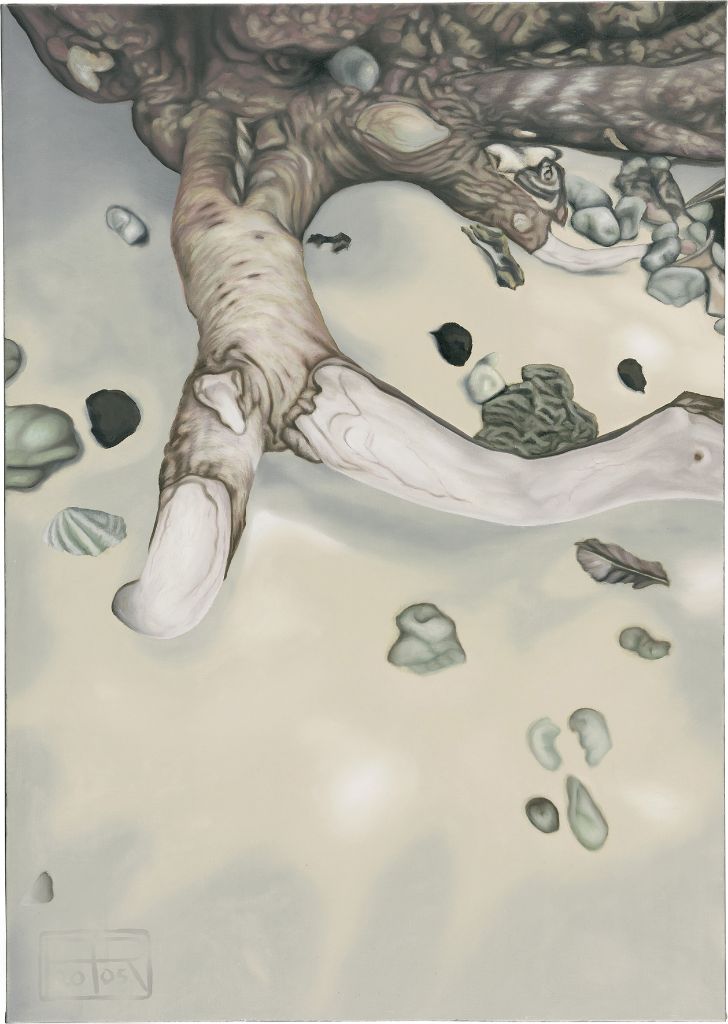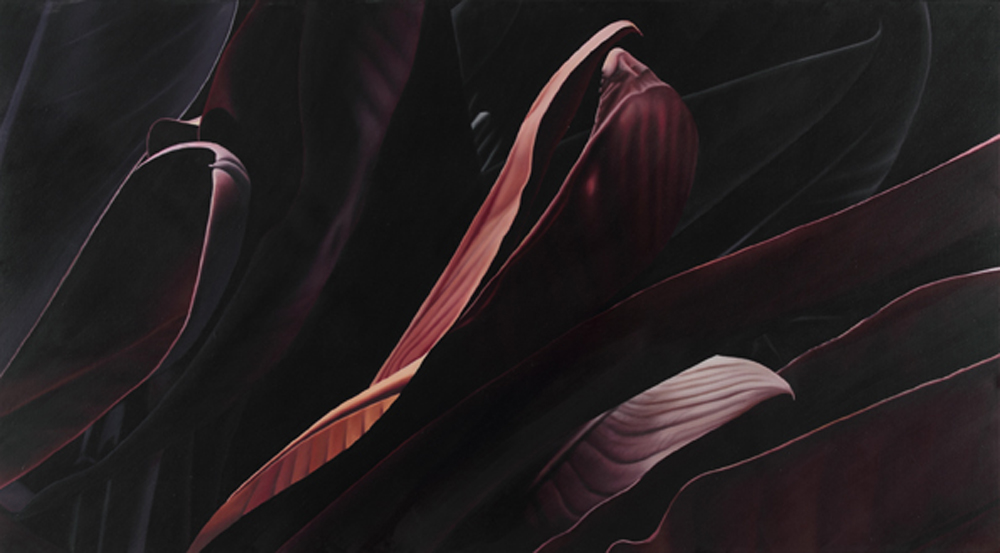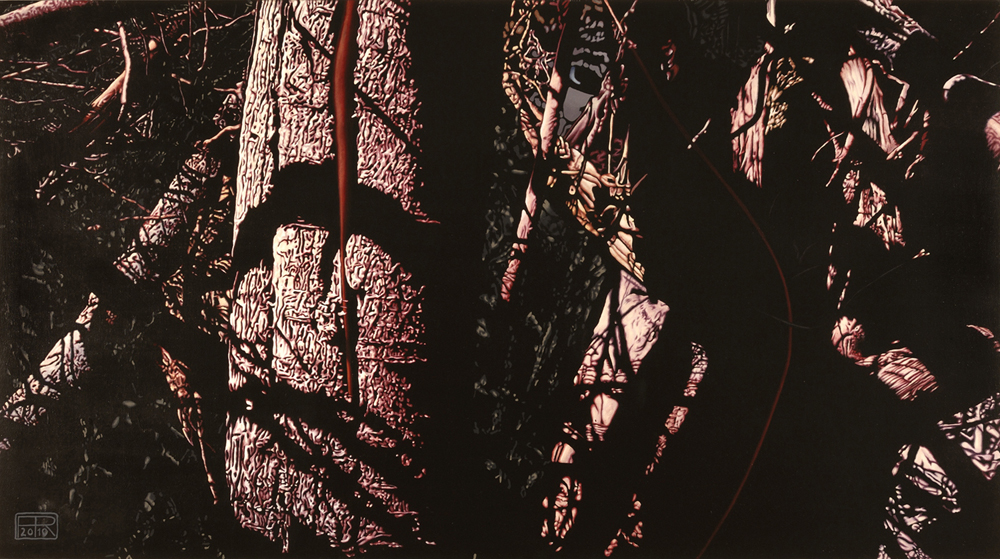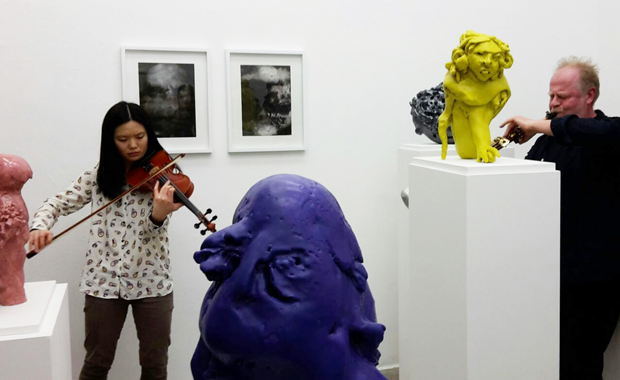
Opening 03/03/2016
The affective turn
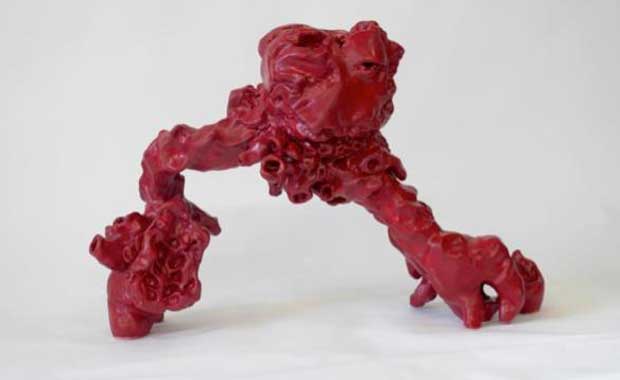
Veronika Witte, ghosted body, 2016
THE AFFECTIVE TURN OR THE SKIN IS FASTER THAN THE WORD
Opening: 03/03/2016, 19-21 PM, 19:00 “Contemporary Present Time Compositions” by Johanna Wu (vl) and Harri Sjöström (ss)
Exhibition: 03/03 – 03/30/2016
Finissage: 03/30/2016, 19:00 Performance by Rafal Dziemidok
Address: WHITECONCEPTS | Auguststraße 35 | 10119 Berlin | www.whiteconcepts.de
Opening hours: Mon – Fri 11 – 17 Uhr and by appointment
How can an uncontrolled half a second between stimulus and response – before it becomes a verbal – be visualized with sculptural and painted portraits? The exhibition at Gallery WHITECONCEPTS presents new sculptures by German artist Veronika Witte entitled “ghosted bodies” and drawings of the series “Anatomy of Pain” by Finnish artist Mika Karhu. Both artists transform portraits that occur from combinations and overlays of photos, drawings and other footage. The artistic positions meet in the survey of social phenomena. By means of concrete images and visions for the future their focus is based on thoughts through and about the body to make emotions and subjective desiderata in an anthropological sense palpable, both in a theoretical and abstract reference system as well as in collective projections.
Affects on social tensions are addressed to expulsion, escape and terrorism as well as the phenomenon of simultaneous virtualization, mechanization and de-privatization of the (social) body. In view of the fact that the exploitation of fears has gained a cynical sharpness and undisguised use in the “closed circuit” of the media, the “affective turn” is generated and an analytical challenge is posed for the arts and disciplines such as philosophy, biotechnology, neuroscience, psychology represents, political economy and cultural criticism.
At the beginning of the research by Veronika Witte her public surveys are repeatedly leading to video works, installations and participatory art projects. Scientific-looking questionnaires determine many of her works in experimental arrangements to survey identity, subject constitution and future prospects.
The artist asked her subjects according to their own subjective feelings about future performances of bodies, expected social developments, and about the future of humanity in general. The anonymized results of Witte’s research are processed by artistic filters into sculptures. Thus in a first sociological scale they probed boundaries between subject and society, between individual and collective ideas of utopia and the relationship between culture and aesthetics. When she is working on her “portraits” of contemporary societies and their projections, the questions is not alone what humans do when they change, but how they do something and how the reason of future fragmented or sampled physical self-portraits – as bodies they are based on a millennium old, evolutionary and cultural processes – is presented and expressed.
Witte’s new sculptures “ghosted bodies” (2015-2016) are based on her long-term research of the ISF-Institute for social field studies: virtually morphed drawings manipulated with digital processes. The drawings show hybrid creatures that are repeatedly used by Witte as a source and a template for sculptural incarnations. Compared to her previous works, the recent works seem less cool, amorphous molecular liquid, glossy lacquered, but rather raw, distorted, effectual, cruel, grotesque and ambivalent. In expressionist colors burned – which refer to their survey results – the sculpture tare contrasts like horror and comedy, absurdity and menace, elegance and monstrosity – an artistic language that always shines forth in the variety and in all conceptual approaches in Witte’s work.
Veronika Witte (* 1962) studied at the Ecole Nationale Superieure des Beaux-Arts in Paris/France. Her work includes videos, sculptures and installations as well as interdisciplinary projects. Witte specifically examines, what roles the biological body for future arrangements in society plays as a resource. At the end of her research often stand sculptural productions together with video and objects, and scenic installations for theater and opera. Witte has received numerous awards. Her work has been presented in numerous exhibitions throughout Europe as well as in Vietnam. Since 1999, she is also responsible for cooperations with theaters (p.e. Staatsbank Berlin, Saarland State Theatre, State Theatre Bielefeld).
Artist information and available works
Mika Karhu’s selection of historical photos and biographical material result as template layers in dark ink painted portraits using grand master’s painting techniques.
With his paintings, drawings and installations he explores the future of society, which is marked by menacing factors. Referring to scientific and philosophical theories and for many years Karhu has been studied the consequences of very strong emotional experience in terms of personal development and social interaction patterns.
As an artist and theorist, he examines the political calculus of power over social insecurity with the resulting emotions, focusing mainly on the fear. At the center of his artistic work stand the examination with the emotional stress of structural vulnerability and its presence like in the form of anxiety as an unconscious construct – the engineered fear of the unfamiliar, the accompanying calamity, the fear of the possible misery and before that the fear of the shift of values. To create a safe society the effort to number of potential sources of threat paradoxically increases. Due to the growing number of prohibitions and rules, the former belonging to “normal behavior” is perceived as a threat as well. This diffuse intimidation becomes an instrument of social power, and has an impact on the life of every common man; because the idea of threat reinforces the feeling of helplessness and evokes uncertainty and unpredictability.
Karhu also scrutinizes commercial applications that are made possible in the economy of fear by monitoring and vulnerability generating threats. His works appear in black and white tones – a metaphor for the world of light and darkness. In one and the same image variations of deep shadows, glowing light, cross light and choking gray are shown.
PhD Mika Karhu (*1969 Joensuu, Finland) studied fine art and graphic alongside with theoretical philosophy, microbiology and neuropsychology. He works as an international artist, scientist, curator and a lecturer in Art and Design at Aalto University in Helsinki and has received numerous awards for his work. Karhu’s work has been exhibited throughout Europe and is represented in numerous public and private collections.

Rafał Dziemidok (*1971) is a dancer, actor and choreographer.After studying modern dance and drama at Bard College (NY, USA), he began his career by working with the Dada von Bzdülöw Company of Gdańsk. Rafał was often awarded (National Festival of Performing Arts, Warsaw – winner in 2000; Polish dancer of the year in 2008; Scholarship by the Ministry of Culture and National Heritage in 2007). His dance works have been presented at various Polish and foreign dance festivals. Besides he choreographs and performs in theatres, operas and films.
In 2005, together with Ewa Garniec, Rafał founded the artistic group KONCENTRAT. This international dance project, currently operating in Berlin and in Warsaw, organizes projects in the fields of dance, performance and visual arts including the participation of artists from different fields. Their work has been featured at major festivals and venues, such as The Place(London), Dublin Dance Festival, Body-Mind (Warsaw), Lublin Dance Festival, Stary Browar (Poznań), Springforward (Ljubljana), Les Plateaux (Val-de-Marne), Azkuna Zentroa (Bilbao), HAU Berlin and Uferstudios (Berlin).


